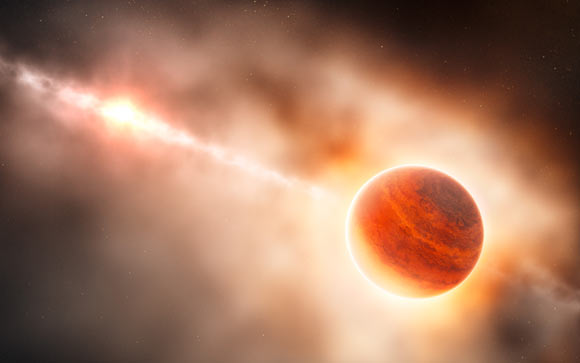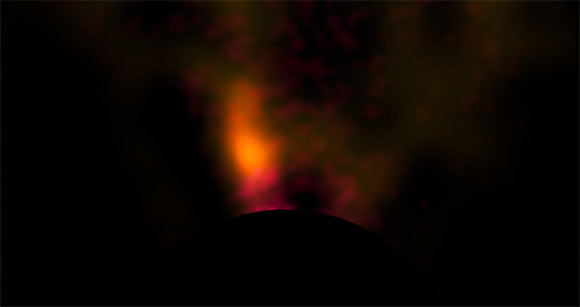An international team of astronomers led by Dr Sascha Quanz from the ETH Zurich’s Institute for Astronomy, Switzerland, has obtained what is likely the first direct observation of a forming gas giant.
“So far, planet formation has mostly been a topic tackled by computer simulations,” Dr Quanz said. “If our discovery is indeed a forming planet, then for the first time scientists will be able to study the planet formation process and the interaction of a forming planet and its natal environment empirically at a very early stage.”
The team used ESO’s Very Large Telescope to study the disc of gas and dust that surrounds the young star HD 100546. Located more than 300 light-years away, this star is a well-studied object, and it has already been suggested that a giant planet orbits about six times further from the star than the Earth is from the Sun. The newly found planet is located in the outer regions of the system, about ten times further out.
The protoplanet was detected as a faint blob located in the circumstellar disc. The observations were made using a special coronagraph, which operates at near-infrared wavelengths and suppresses the brilliant light coming from the star at the location of the protoplanet candidate.
According to current theory, giant planets grow by capturing some of the gas and dust that remains after the formation of a star. The team has spotted several features in the new image of the disc around HD 100546 that support this protoplanet hypothesis.

This artist’s impression shows the formation of a gas giant planet in the ring of dust around the young star HD 100546 (ESO / L. Calçada)
“Exoplanet research is one of the most exciting new frontiers in astronomy, and direct imaging of planets is still a new field, greatly benefiting from recent improvements in instruments and data analysis methods. In this research we used data analysis techniques developed for cosmological research, showing that cross-fertilization of ideas between fields can lead to extraordinary progress,” said Dr Adam Amara, also of the ETH Zurich’s Institute for Astronomy, co-author of a paper reporting the findings submitted to the Astrophysical Journal Letters (arXiv.org version / ESO’s version).
Although the protoplanet is the most likely explanation for the observations, the results of this study require follow-up observations to confirm the existence of the planet and discard other plausible scenarios.
______
Bibliographic information: Sascha Quanz et al. 2013. A young protoplanet candidate embedded in the circumstellar disk of HD100546. Accepted for publication in ApJ Letters; arXiv: 1302.7122








